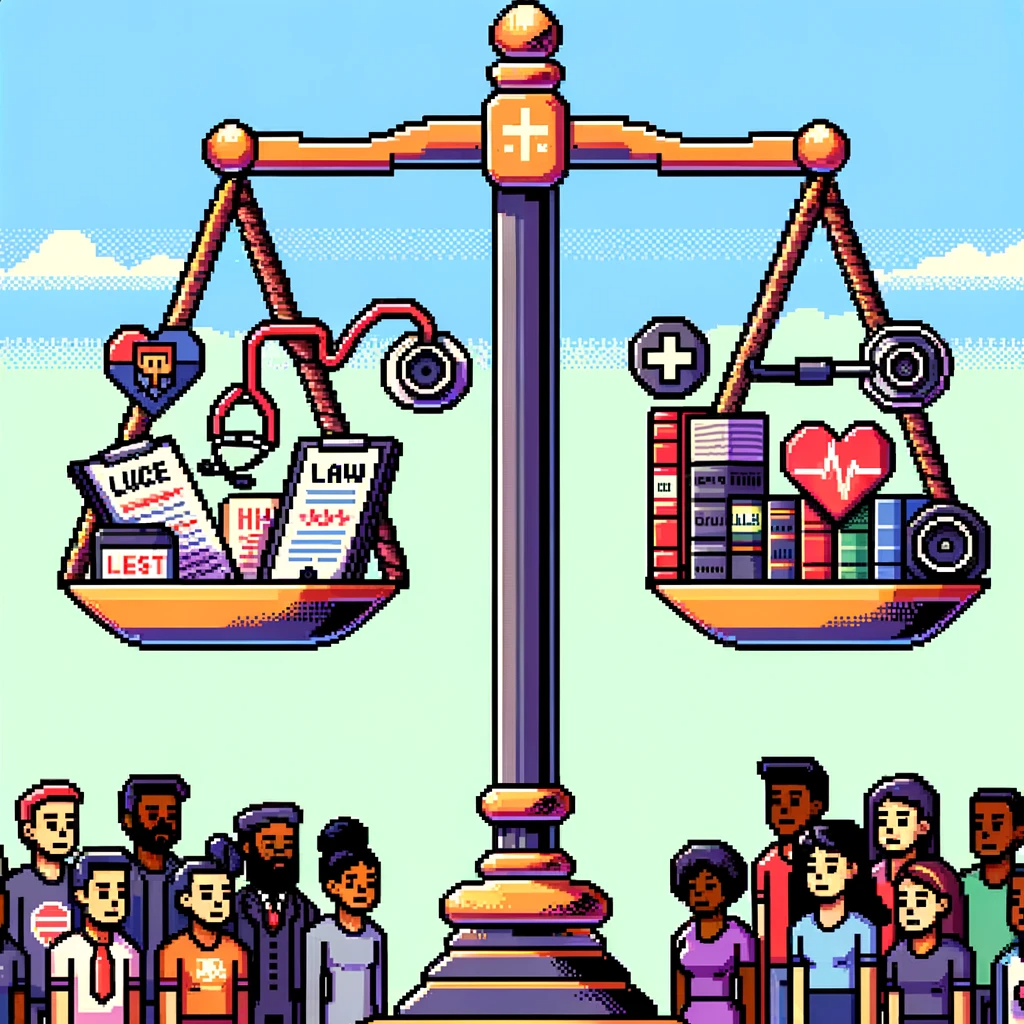
The Ties Between Law and Health: A Deep Dive into Structural Racism and Premature Mortality
Public health is a complex field, intricately tied to various societal elements, including laws and regulations. A recent study, “Legislating Inequity: Structural Racism In Groups Of State Laws And Associations With Premature Mortality Rates” sheds light on this interconnection, revealing how clusters of state laws rooted in structural racism correlate with premature mortality rates.
Understanding Structural Racism in Lawmaking
The study examined not just individual laws, but the collective impact of multiple laws that embody structural racism. This approach acknowledges the complexity of legal systems, where the effects of one law are often intertwined with others, creating a network that affects public health outcomes.
The Impact of Legal Clusters on Health
Researchers identified three distinct groups of states based on their laws related to structural racism. The first group, consisting of 29 states, had predominantly harmful laws. The second, with 15 states, had predominantly protective laws, and the third group, comprising 7 states, had a mix of both. Significantly, the study found that premature mortality rates were highest in states with primarily harmful laws, many of which were former Jim Crow states.
Premature Mortality: A Reflection of Legal Landscapes
Premature mortality, defined as deaths before age 75, served as a crucial indicator in this study. The findings were stark: states with laws that negatively impact minorities, particularly Black Americans, showed higher premature mortality rates. This correlation underscores how legal frameworks extend beyond courtrooms and legislative halls, significantly impacting the health and longevity of populations.
Dissecting the Data: A Closer Look
The study employed latent class analysis, a statistical method that identifies subgroups within a population. This approach was pivotal in categorizing states based on their legal stance towards structural racism. The results were telling – states with a history of Jim Crow laws were more likely to have harmful legal frameworks, perpetuating health inequities and higher premature mortality rates.
The Continuing Legacy of Jim Crow
The echoes of Jim Crow laws, although legally abolished, still resonate in contemporary legal structures. This study shows how these outdated, racially biased laws have morphed into modern legal practices that continue to impact health outcomes disproportionately. The findings suggest a need for a critical reevaluation of current laws and policies through the lens of equity and health impact.
Moving Beyond the Surface: Deep-Seated Issues
The study reveals that addressing health disparities requires more than superficial changes. It calls for a comprehensive overhaul of legal frameworks that inadvertently perpetuate racial inequities. For public health practitioners, this means advocating for policies that not only address immediate health concerns but also dismantle the underlying legal structures that contribute to these disparities.
Implications for Public Health Practitioners
- Advocacy for Legal Reform: This study highlights the need for public health professionals to engage in advocacy for legal reforms. Collaborating with lawmakers to reevaluate and revise laws that contribute to health inequities is crucial.
- Holistic Approach to Health Equity: Addressing health disparities requires a holistic approach. Practitioners must consider the broader social and legal context in which health inequities arise.
- Research and Policy Development: The findings underscore the importance of continued research into the intersection of law and health. Developing policies that consider the multifaceted nature of health determinants is essential.
- Educational Outreach: Educating communities about the impact of structural racism in laws and its effect on health is vital. Awareness can drive change and empower individuals to advocate for equitable policies.
Conclusion
“Legislating Inequity” challenges public health practitioners to look beyond traditional health interventions and consider the broader legal and social structures that shape health outcomes. By understanding and addressing the roots of structural racism in lawmaking, we can move towards a more equitable and healthy society.
Transform Information into Action – Subscribe Now!
Your key to unlocking the power of public health knowledge awaits! ‘This Week in Public Health’ is not just a newsletter; it’s a catalyst for informed action. With a focus on cutting-edge research, community health successes, and advocacy insights, each issue empowers you to make a tangible impact. Subscribe for free and turn information into action today!



